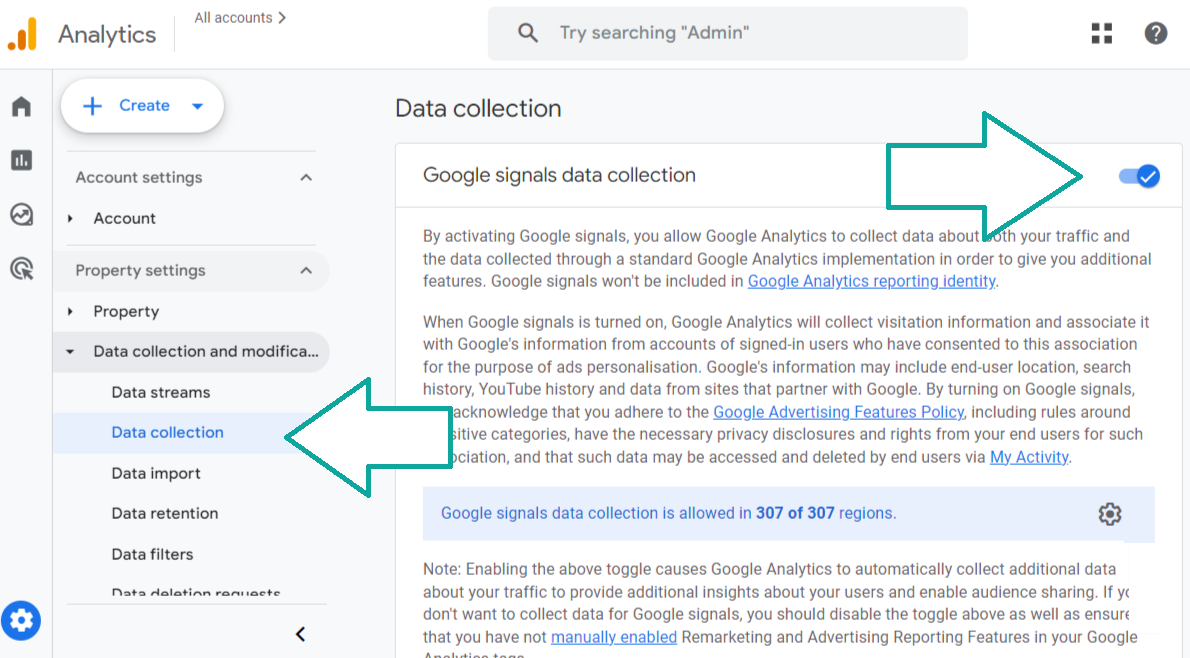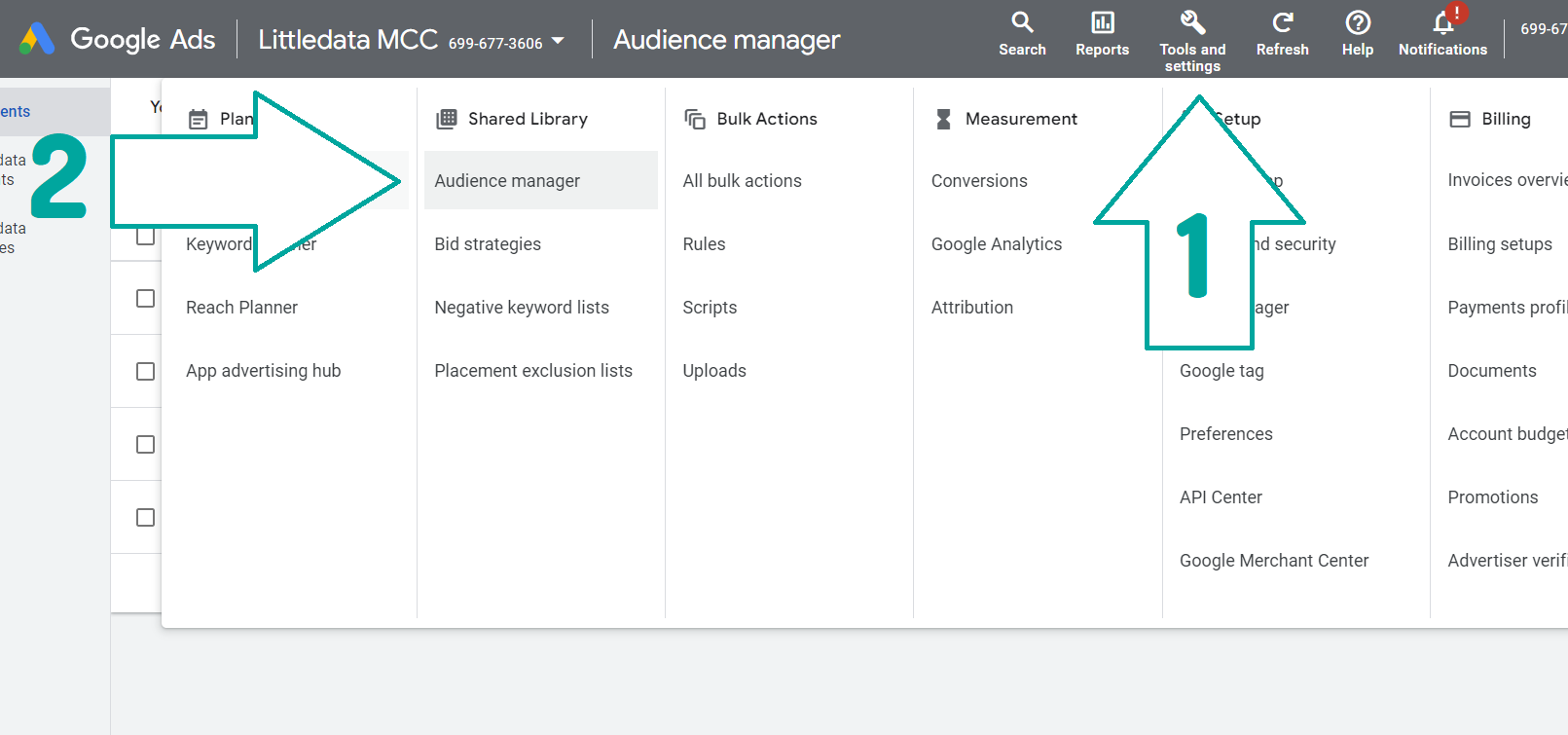Building winback campaigns in Google Ads
The benchmark conversion rate for ecommerce is 2% - so what happens with the remaining 98% of visitors who land on your website but never buy?
Retargeting visitors through personalised ads is a must do - people were already on your website, so it’s up to you to understand what prevented the purchase and adjust the offer!
Littledata’s role in this process is to collect user data and send it to GA4. Your role is to use this data to create proper retargeting audiences.
Importing audiences from GA4
-
You can see how to get Littledata to track events in GA4 here
-
After that you'll need to turn on Google Signals:

-
Also don’t forget to link Google Ads to your GA4 property:

-
Here is where you can find your Audiences in your Google Ads account:

Example audiences for Google Ads
Here are just a few examples of particular audiences that address specific scenarios:
A. Customer keeps viewing products but never buys (purchase count = 0) B. A channel with high traffic volume in the top of funnel doesn’t convert C. Product added to cart but checkout never started D. Customer bought once and didn’t come back E. Customers who spent more than a preset threshold F. Your custom funnel dropoff (e.g. after a quiz, survey, etc) G. People who first visited during a particular time-range (e.g during Black Friday sale)
How to build audiences in GA4
If you prefer watching a video that explains how to create GA4 Winback audiences that will help your Google Ads remarketing efforts.
Audience-specific creative ideas
Here a a few ideas for creatives which fit a particular audiences (audience shown in parentheses):
Highlight Product Benefits (A, C and E)
Create retargeting ads that emphasize the key benefits of the products. Address objections by showcasing how the product solves a problem, meets a need, or enhances the customer's life. This could also include how-to guides, video demonstrations, or in-depth product specifications.
Customer Testimonials (D, E)
Use retargeting ads to feature customer testimonials or reviews. Real experiences from other customers can help overcome objections and build trust.
Limited-Time Offers (E, F, H)
Create a sense of urgency in retargeting ads by incorporating limited-time offers. Highlight discounts or promotions to encourage customers to make a purchase sooner rather than later.
Address Pricing Concerns (A, F)
If price is a common objection, use retargeting ads to emphasize the value proposition of the product. Showcase any additional features, quality, or uniqueness that justifies the price.
Free Trials or Samples (B, D)
Offer free trials, samples, or exclusive previews through retargeting ads. This allows potential customers to experience the product with minimal risk, addressing concerns they may have about its suitability.
Highlight Return Policies (B,C)
Address concerns about the product not meeting expectations by highlighting the store's flexible return policies. Emphasize hassle-free returns and customer satisfaction guarantees in retargeting messages.
Interactive Content (G)
Create interactive retargeting content, such as quizzes or interactive product tours, to engage potential customers and address objections in a dynamic way.
General creative ideas
Here are a few general types of ads that are very effective in the retargeting campaigns:
Showcase Awards or Recognition
If applicable, use retargeting ads to showcase any awards, certifications, or industry recognition the product has received. This helps build credibility and addresses concerns about product quality.
Compare and Contrast
Develop retargeting content that compares the product with competitors, emphasizing unique selling points and addressing objections by showcasing why the product stands out.
FAQs in Ads
Incorporate frequently asked questions (FAQs) directly into retargeting ads. This can address common concerns and provide instant answers to potential customers.
Final thoughts
Remember to test different messaging and creative elements in your retargeting campaigns to identify what resonates best with your audience. Regularly analyze performance metrics to refine your approach and continually improve the effectiveness of your retargeting efforts.
Personalisation is the key here - don't say the same things to everyone.
One last note to wrap it up (as the old adage goes) you are only as good as your list (or your audience in this case!)